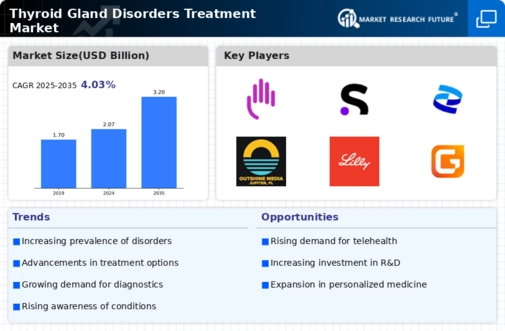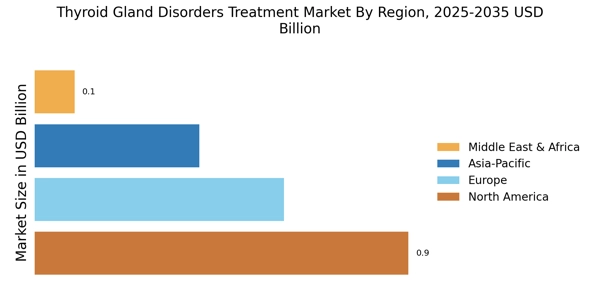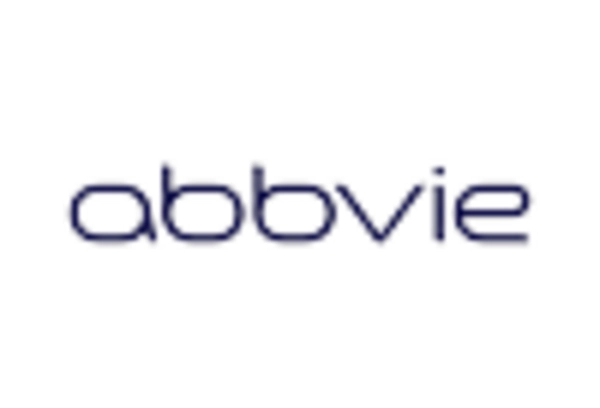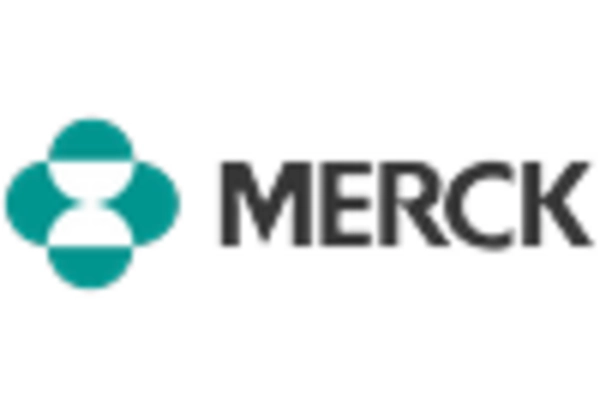Emergence of Novel Therapeutic Options
The emergence of novel therapeutic options, including biologics and targeted therapies, is reshaping the Thyroid Gland Disorders Treatment Market. Recent research and development efforts have led to innovative treatments that offer improved efficacy and safety profiles compared to traditional therapies. These advancements are particularly relevant for patients with resistant forms of thyroid disorders, who may not respond adequately to standard treatments. The introduction of new drugs and treatment modalities is likely to enhance patient outcomes and satisfaction, thereby driving market growth. As pharmaceutical companies invest in research to develop cutting-edge therapies, the Thyroid Gland Disorders Treatment Market is poised for significant transformation.
Advancements in Diagnostic Technologies
Technological advancements in diagnostic tools are significantly influencing the Thyroid Gland Disorders Treatment Market. Enhanced imaging techniques, such as ultrasound and nuclear medicine, along with improved laboratory tests for thyroid function, facilitate accurate diagnosis and monitoring of thyroid disorders. These innovations enable healthcare providers to tailor treatment plans effectively, which is crucial for patient outcomes. The market for diagnostic devices is projected to grow, driven by the need for precise and timely diagnosis. As diagnostic capabilities improve, the treatment landscape for thyroid disorders is expected to evolve, leading to increased demand for targeted therapies and interventions within the Thyroid Gland Disorders Treatment Market.
Increasing Prevalence of Thyroid Disorders
The rising incidence of thyroid disorders, including hypothyroidism and hyperthyroidism, is a primary driver of the Thyroid Gland Disorders Treatment Market. According to recent estimates, approximately 12% of the population will develop a thyroid condition during their lifetime. This growing prevalence necessitates effective treatment options, thereby expanding the market. The increasing awareness of thyroid health among the general population and healthcare professionals contributes to early diagnosis and treatment, further propelling market growth. As more individuals seek medical attention for thyroid-related symptoms, the demand for innovative therapies and medications is likely to rise, indicating a robust market potential for stakeholders in the Thyroid Gland Disorders Treatment Market.
Growing Awareness and Education Initiatives
The increasing awareness surrounding thyroid health is a significant driver of the Thyroid Gland Disorders Treatment Market. Educational campaigns aimed at both healthcare professionals and the public have heightened understanding of thyroid disorders, their symptoms, and the importance of early intervention. This awareness leads to more individuals seeking medical advice and treatment, thereby expanding the patient base for thyroid therapies. Furthermore, organizations dedicated to thyroid health are actively promoting screening and preventive measures, which could potentially reduce the burden of untreated thyroid conditions. As awareness continues to grow, the demand for effective treatment options in the Thyroid Gland Disorders Treatment Market is likely to increase.
Rising Demand for Hormone Replacement Therapies
The demand for hormone replacement therapies, particularly for hypothyroidism, is a key driver in the Thyroid Gland Disorders Treatment Market. Levothyroxine, a synthetic form of the thyroid hormone, remains the standard treatment for hypothyroidism and is widely prescribed. The increasing recognition of the importance of maintaining hormonal balance in overall health has led to a surge in prescriptions for these therapies. Additionally, the aging population, which is more susceptible to thyroid disorders, is likely to contribute to the growing market for hormone replacement therapies. As healthcare providers continue to emphasize the need for effective management of thyroid conditions, the market for these treatments is expected to expand.


















Leave a Comment